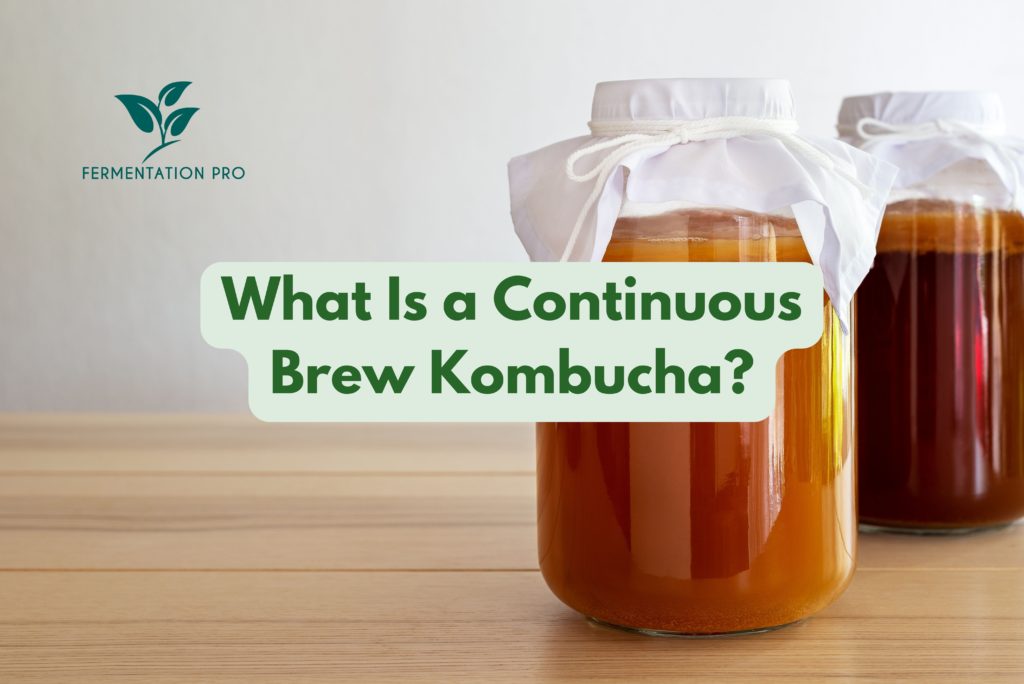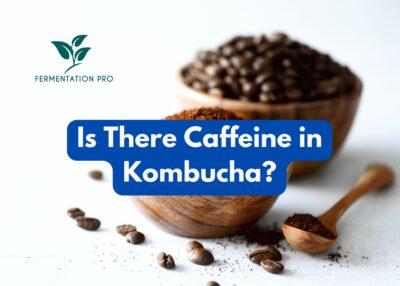Continuous brew Kombucha has got to be the most efficient and easiest way to get your daily fix of Kombucha. Here’s why.
Continuous brew Kombucha is a simple fermentation technique that allows anyone to make Kombucha with little effort and time at a fraction of the cost of buying commercial Kombucha every day. It is done by brewing Kombucha in a large fermentation jar with a spigot. When the Kombucha has finished fermentation, you can simply turn the spigot to dispense the Kombucha into your bottles or cup. To continue the brewing indefinitely, just refill your fermentation jar regularly with sweet tea.
So, if you are looking for a way to brew Kombucha more efficiently to have a consistent source of Kombucha in your home, then you should definitely give continuous brew Kombucha a try. Keep reading as we discuss everything about continuous brew Kombucha and how you can start and maintain your own.
Table of Contents
Unlike batch brewed Kombucha, continuous brew Kombucha allows you to only draw off the amount of Kombucha you need instead of using the brew all at once. You will only need to dispense some of the liquid from your Kombucha brew and replace it with the same amount of sweet tea.
Allow your Kombucha to ferment for 7 to 30 days depending on how sweet and sour you want it to be before harvesting. The longer it ferments, the less sweet and sourer it will taste. Overall, this method can save you time, energy, and cost.
How Does Continuous Brew Kombucha Work?
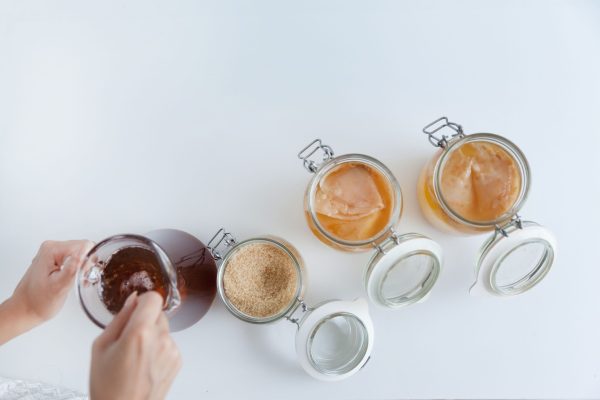
Starting your own continuous brew at home is relatively easy. You just have to start by making one batch of Kombucha brew with the usual ingredients namely SCOBY, starter liquid, water, tea, and sugar in a large fermentation jar. The fermentation jar should be able to contain two to five gallons or more depending on how much Kombucha you want to brew.
A fermentation jar with a spigot is optional but highly encouraged so you can draw off your Kombucha brew easier. When choosing the spigot, make sure to not choose metal. Kombucha is naturally acidic, and the high acidity can cause metal spigots to leech. However, if you really want to use a metal spigot, use one that is made with stainless steel. Stainless steel is resistant to corrosion and does not affect the flavor of Kombucha in any way. Other spigots made from plastic and wood also work well for fermentation.
After you have established your brew, allow it to ferment for 7 to 30 days depending on your preferred sweetness and tartness. You can taste your Kombucha brew daily so you can achieve your perfect blend of sweet and sour.
How to Harvest Kombucha Brew?
When you are satisfied with the taste of your brew, you can prepare to harvest and transfer your brew from the fermentation jar to another vessel for drinking. culturesforhealth.com suggests two ways to harvest your Kombucha. The first way is to pour out the Kombucha you want to consume in a week into bottles. The second one is to draw off Kombucha as you drink it and just refill the fermentation jar at the end of the week.
Just a quick tip, stir your brew before drawing off the Kombucha to remove the heavy yeasts that have settled at the bottom to make sure that your Kombucha flows smoothly through the spigot. After stirring, open the spigot and fill your bottles with Kombucha.
Ideally, you should leave at least 30% of the brew on the fermentation jar to act as a starter liquid. Always refill your with the same amount you dispensed to keep your culture healthy and avoid having an over-fermenting and overly sour Kombucha. Repeat this process for a regular supply of Kombucha.
If you choose to bottle your Kombucha, it’s up to you if you will drink it plain or allow it to undergo second fermentation which can take an additional 2 to 10 fermentation days. Fermenting in bottles makes it fizzy and more enjoyable to drink. If you want more flavors in your bottled Kombucha, you can also add fruits, vegetables, and other flavorings to your bottles before filling them with your Kombucha brew.
Just like the first fermentation, the longer you brew your Kombucha during the second fermentation will make it more acidic and tarter.
Continuous Brew Kombucha Benefits
Both batch brew Kombucha and continuous brew Kombucha will have the same sweet and tart flavor. However, the latter has more practical benefits that you may be interested to know. Below, we’ve rounded up the benefits of continuous brew Kombucha.
1. Suitable for all Kombucha brewers
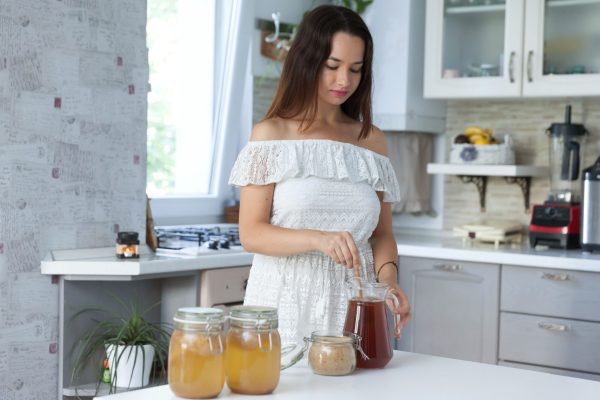
Whether you are a commercial producer or homebrewer who is always on the go, continuous brew Kombucha is a great brewing technique for you. Its ease and efficiency are well suited for different lifestyles and schedules.
2. Contains the same nutritional benefits as batch brewed Kombucha
You won’t need to worry about not having the same level of nutrition because both batch brewed Kombucha and continuous brew Kombucha offer the same health benefits. With continuous brew Kombucha, you can ferment Kombucha easier and more efficiently without compromising your health.
3. Faster fermentation
You can have a starter liquid that is packed with yeasts and bacteria that can boost the fermentation process. Continuous brew provides sufficient food supply to the yeasts and bacteria so your SCOBY can stay healthy and fit for fermentation.
4. Lower risk of contamination
You wouldn’t need to hold the SCOBY to transfer and use it for different batches of Kombucha. This eliminates the chances or opportunities for contamination by outside influences.
How Long Can You Brew Continuous Kombucha?
Continuous brew kombucha can brew indefinitely as long as it is properly maintained.
Maintaining is relatively easy after you have established your first batch. Remember that your first batch should be able to start fermentation so give it some time. Usually, it takes about a week or more for a SCOBY to settle in the brew and develop a SCOBY baby. When you see that your SCOBY is growing and is already settled in your brewer, you can start the maintenance.
A big part of maintenance is stirring. Stirring helps in microbial balance and proper distribution of yeasts and bacteria in the brew.
Kombucha is composed of microorganisms namely bacteria and yeast. Some of these microorganisms are light causing them to float while the heavy microorganisms are very likely to sink. Hence, it is ideal to stir the brew to maintain microbial balance in the brew. To stir you have to lift the SCOBY up a little bit using a wooden spoon and stir accordingly until the microorganisms are well distributed.
Next to stirring, you should also make sure to always leave 20% to 30% Kombucha in your fermentation jar so you can have a strong starter liquid full of bacteria and yeast to ferment the fresh sweet tea.
Why Do You Need to Trim Your SCOBY?
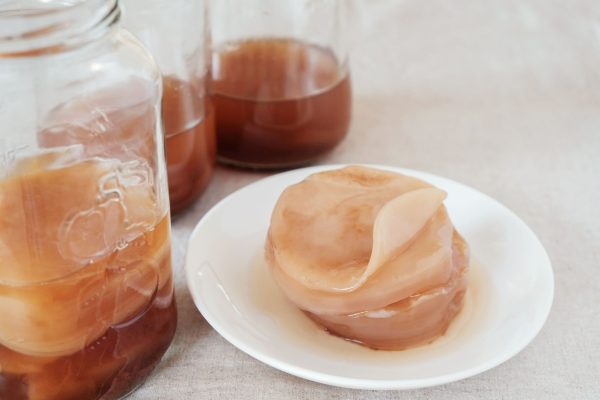
In addition, keep in mind to trim your SCOBY. Your SCOBY will continue to grow as the fermentation process continues. This could take up a lot of space in your fermentation jar so it is good practice to separate and trim your SCOBY once it occupies much space in your brewer. Don’t worry because your SCOBY will be just fine even if you cut it. You can use your excess SCOBY for many healthy recipes or give it to your friends and family so they can start their own continuous brew Kombucha as well.
Another important tip for maintenance is to clean your spigot immediately with a small bottle brush once it clogs. Your brewer’s spigot can clog due to the residues from the SCOBY or yeasts. Make sure that your brush is clean to prevent any contamination. You can clean it by washing it with Kombucha before inserting it into the spigot.
Is Continuous Brew Kombucha Fizzy?
The quick answer is no. It isn’t fizzy, however, you can always make your Kombucha fizzy by double fermenting it. Allowing your Kombucha to undergo second fermentation makes your flat Kombucha into a fizzy drink with a slight flavor depending on the fruit, vegetable, spice, or other flavorings you use.
To do a second fermentation, you’d need airtight bottles and some flavoring of your choice, this could be fruit purees or chunks, spices, and others. Simply put your chosen flavoring in your bottles and pour some Kombucha into them using the spigot. Allow fermentation for 2 to 10 days depending on the fermentation progress and your desired taste.
What Happens if You Brew Kombucha for Too Long?
Fermenting Kombucha through batch brewing or continuous brewing for too long is very likely to result in over-fermentation. When the Kombucha is over-fermented, its taste can be too tart and acidic for daily consumption. Kombucha that has been brewed for too long is called Kombucha vinegar. This substance is used similarly to apple cider vinegar. If your Kombucha turns to Kombucha vinegar, do not panic because it can still be of good use.
Kombucha vinegar, like apple cider vinegar, contains acetic acid that has health-promoting benefits. Some of these benefits include killing bacteria, reducing blood pressure, and decreasing inflammation.
Compared to batch brew Kombucha, continuous brew Kombucha can easily turn to vinegar because of the abundant microorganisms that boost fermentation. To avoid over-fermenting, make sure to dispense your Kombucha every week or within 30 days. Additionally, take note to replace the Kombucha you poured off with the same amount of sweet tea.

